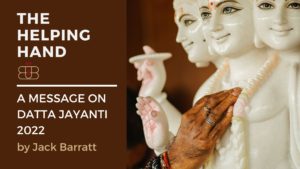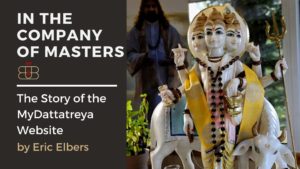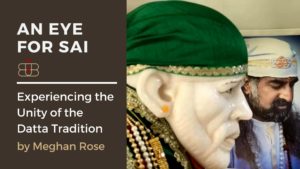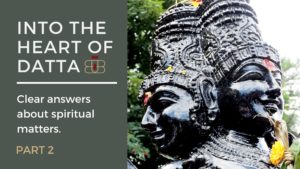Bodhinatha Veylanswami
Overview and Significance
The spiritual leader of Kauai Aadheenam is Satguru Bodhinatha Veylanswami. He has been the monastery’s head since the founder, Satguru Sivaya Subramuniyaswami, attained mahasamadhi, his great departure, in 2001. Subramuniyaswami, known affectionately as Gurudeva, designated Bodhinatha, a disciple for thirty-seven years, as his successor.
Most of the year finds Bodhinatha on the island of Kauai, where he oversees the varied publications of Himalayan Academy and serves as publisher of the international magazine Hinduism Today. At the 382-acre monastery temple complex, he trains the younger monks in their service duties and spiritual practices and guides the lives of hundreds of families around the globe. Following in Gurudeva’s footsteps, he works informally with Kauai leaders to perpetuate the island’s aloha spirit of love and friendliness and help the community achieve greater sustainability.
Bodhinatha is immersed in a series of educational projects and international seminars that focus on bringing religious instruction to Hindu youth and pamphlets and books that present Gurudeva’s teachings in a thoughtful, step-by-step style. A recent project produced the first two books of the series Hindu Children’s Modern Stories. Volume One, Ten Tales About Self-Control, and Volume Two, Ten Tales About Religious Life, are based on the yamas and niyamas, Hinduism’s ethical restraints, and religious observances.
Bodhinatha travels intensely, teaching Hinduism and consecrating major Hindu temples around the world. He has personally blessed the openings of temples in North America, Australia, and India. Communities across the United States, Canada, the Caribbean, South Asia, and elsewhere have brought him to speak to their devotees. Every few years, he conducts Innersearch Travel-Study Programs, taking pilgrims to India, Australia, New Zealand, Malaysia, Cambodia, and, most recently, to the Hindu-majority island of Mauritius in 2015.
In 2011, the Shivacharya of India honoured him for overseeing a three-year project that digitised over a million inscribed palm leaves to preserve and share with the world ten thousand deteriorating manuscripts, including Shaiva Agamas and other important scriptures. Additionally, he guides four major nonprofit organisations’ financial and administrative staff, including the eighteen-million-dollar Hindu Heritage Endowment. He was its principal architect under Gurudeva’s guidance.
Life History
ADDITIONAL BACKGROUND
Born in Berkeley, California, on October 15, 1942, Bodhinatha began studying Vedanta and meditation in 1960, soon developing a deep interest in monastic life. He met Gurudeva at the Mountain Desert Monastery in September of 1964 in Virginia City, Nevada, while still in school. At this first meeting, he stated his desire to realise God. Gurudeva brought him close quickly by having him stay in the San Francisco monastery on weekends. When school was completed in June 1965, Bodhinatha moved full time into the monastery and took his sadhaka vows a few months later in August at age twenty-two.
Bodhinatha managed Gurudeva’s Master Course Correspondence Study from the Nevada monastery in the late 60s, guiding hundreds of students in their initial explorations of yoga, meditation, mysticism, and Hindu metaphysics. He was in the initial group of four monks who moved with Gurudeva to Kauai to establish Kauai Aadheenam in February 1970. Later that year, Gurudeva took him to Sri Lanka and introduced him to the Jaffna Shaivite culture and worship. He worked closely with Gurudeva from 1970 to the present as Vice President of Gurudeva’s several nonprofit corporations and one of the stewards guiding the monks’ lives, their activities, publications, and projects, responsible directly for all financial, legal, and administrative matters.
In March, 1972, he received sannyas diksha in a powerful ceremony at which Gurudeva initiated a number of monastics at his Sri Subramuniya Ashram in Alaveddy, Sri Lanka. He received from Gurudeva the name Veylanswami a few weeks later at the Murugan Temple in Palani Hills. After helping Gurudeva take seventy-two pilgrims on the round-the-world 1972 India Odyssey Innersearch to many temples and ashrams in India and other nations, he was sent by Gurudeva to live, meditate and do special sadhanas for six months at the Sri Subramuniya Ashram in Alaveddy. He stayed six months at the Sri Subramuniya Ashram again in 1974. During this period, totaling one year in the homeland of the Kailasa Parampara’s tradition, he was able to visit many times for worship and meditation Paramaguru Yogaswami’s hut in Columbuthurai, the Shivathondan Nilayam on KKS Road, the famous Nallur Murugan Temple, the Kumbalavalai Pillaiyar Temple, Katirgamam in the South, as well as numerous other places of worship. Though Yogaswami passed in 1964, his shishya Markanduswami was still living, and Bodhinatha was able to spend time with this remarkable direct disciple on a number of occasions.
In preparation for beginning his first teaching mission, he was instructed by Gurudeva to spend nine months living in complete solitude as a hermit in a thatched hut on a small oceanfront parcel on the Kona Coast of Hawaii, where he performed intense daily worship and meditation during most of 1977. Later, in 1982, he began to serve in a senior administrative capacity at Kauai Aadheenam, also accompanying Gurudeva on lecture tours to Mauritius, Malaysia, and Singapore. In 1988, Bodhinatha spent six months on pilgrimage in India, spending time worshiping and meditating at ashrams and temples from as far north as Rishikesh to Tiruchendur in the South. Upon returning to Kauai, he received acharya diksha from Gurudeva, becoming the first acharya of Gurudeva’s Order.
From 1993 onwards, Gurudeva entrusted to Bodhinatha the formation and development of the Hindu Heritage Endowment, which will support Hinduism and the church far into the future.
In 1995 a new version of the Church’s manual, called the Shaiva Dharma Shastras, was published in which, for the first time, Gurudeva named his successors. Three were designated, with Bodhinatha being the first, followed by Palaniswami and then Ceyonswami.
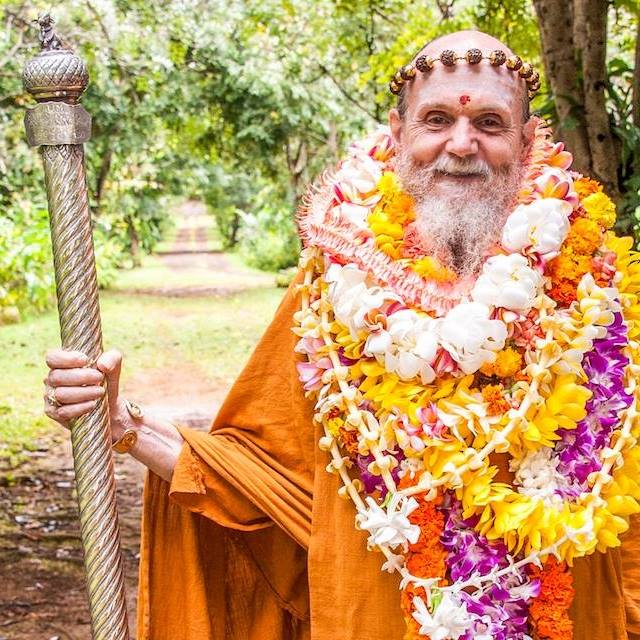
Tradition and Gurus
Gurudeva was on retreat for three years from 1997 to 1999, absorbed in completing his legacy work, the Master Course trilogy. During those years, he vowed not to leave the island of Kauai. Therefore, Gurudeva asked Bodhinatha to represent him and to travel more frequently to the USA, India, Malaysia, Singapore, and Mauritius to visit members, students, and devotees. He met them in small and large groups, giving private and public talks and holding satsangs. Activities during these years included taking members and younger monks on pilgrimage to major temples in Tamil Nadu, visiting ashrams in Karnataka, and spending time at the Bangalore carving site for the Iraivan Temple. In 1997 Gurudeva initiated Bodhinatha as Paramacharya, which empowered him to give the first Shaivite initiation of Samaya Diksha, also known as Mantra Diksha, and gave him the name Bodhinatha, which means ‘lord of wisdom’ or ‘chief among the awakened ones.’ During his 1997 travels, he gave Samaya Diksha to members in Mauritius, Malaysia, Singapore, and India.
In 1999-2001 Gurudeva was again traveling on month-long programs, such as the Innersearch Travel Study Programs to Alaska, the Caribbean, Northern Europe, and the United Nations Millennium Summit of Religious and Spiritual Leaders. He was again away from his regular duties at the Aadheenam during his three-month recovery from a hiking injury suffered on December 5, 2000. Bodhinatha was the senior monk in charge in Gurudeva’s absence, responsible for conducting the monks’ morning meditations, giving talks to the monks, and presenting the semiweekly discourses in Kadavul Hindu Temple for devotees.
On October 21, 2001, the tenth evening of Gurudeva’s 32-day prayopavesha fast, Gurudeva asked Bodhinatha to come to his bedside, which all the monks had gathered around. He sent for his aadheenakartar pendant, the symbol of the spiritual head of Kauai Aadheenam, then placed it lovingly on Bodhinatha’s neck. He took his beautiful golden Namasivaya bracelet and softly clasped it on Bodhinatha’s wrist. It was a gracious moment, and no one in the room missed its importance. Gurudeva then removed one of his rings and placed it on his successor’s finger, stating that his name would be Satguru Bodhinatha Veylanswami, then declaring, ‘You are the Guru now.’
Teachings
KEY TEACHINGS- A Selection
A complete listing is available on the website www.himalayanacademy.com
TABLE OF CONTENTS >
Our Daily Modes of Consciousness Editorial | YouTube |
Is the Future a Work-from-Home World? Editorial | YouTube |
Should Parents Teach Their Kids Religion? Editorial | YouTube |
“In a globalized world, people are questioning the need to pass their faith on to the next generation. Let’s talk about that.”
Integrating Hinduism into Daily Tasks Editorial | YouTube |
“No need to wait for personal time for spiritual practices. You can do inner yogas, resolve karma and build your character anytime.”
Mom, Dad, I’m an Atheist Editorial | YouTube |
“Hinduism has never opposed the idea of disbelief, but its profound understandings of God make atheism more difficult”
A Hindu View of Mindfulness Editorial | YouTube |
While mindfulness has been redefined for popular secular purposes, its original spiritual intention remains unchanged
A Mystical View of Sanatana Dharma Editorial | YouTube |
As an emanation of God, each soul has the eternal truths of Hinduism encoded within itself, available through meditation.
BOOKS
TABLE OF CONTENTS >
Ten Tales About Religious Life
Saivite Hindu Religion Book Two
Saivite Hindu Religion Book Three
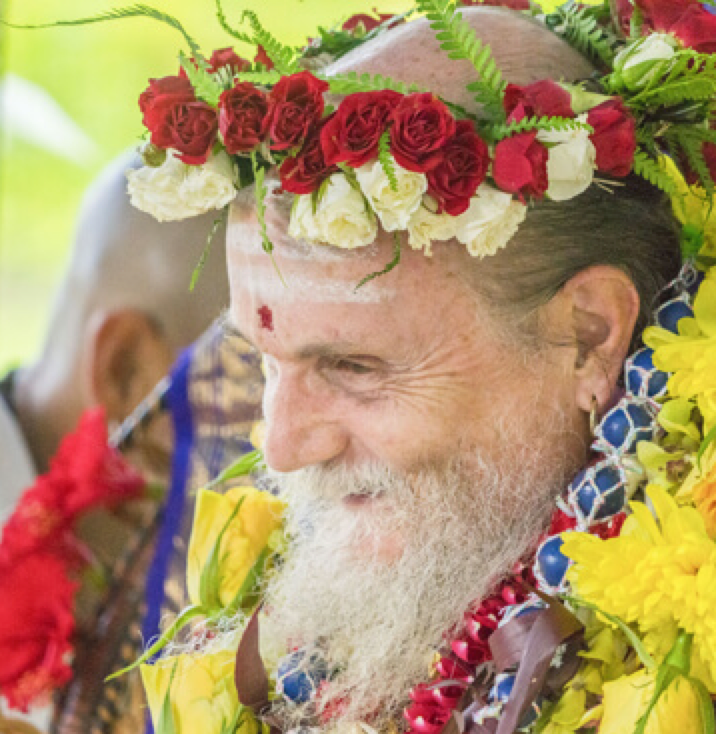
Sacred Practices/Sadhana
Three Ways to Study The Master Course
1. SUPERVISED STUDY
As of December 2018, Himalayan Academy’s Supervised Master Course Study is offered as an online course with daily lessons that can be accessed on either a computer or a mobile device. Being online, the course is able to utilise many of our rich digital resources.
The daily study centers around a ten-minute ‘Spiritual Workout.’ This daily practice period follows the format given in the Hinduism Today Publisher’s Desk article ‘A 10-Minute Spiritual Workout.’ The ‘Spiritual Workout’ is also available as a free mobile app that you can use to guide your ten-minute session. You can download it on Apple’s App Store and on Google Play.
- Worship – two minutes
- Introspection – two minutes
- Affirmation – one minute
- Study – five minutes
A daily lesson from one of the Master Course trilogy books is read during the five-minute study portion. Course videos, audios, apps, etc. may be enjoyed at leisure, while commuting or relaxing in the evening, for example.
The Master Course Trilogy
Satguru Sivaya Subramuniyaswami’s 3,000 page Master Course consists of the three textbooks Dancing with Siva, Living with Siva, and Merging with Siva. The Trilogy is a legacy of profound, approachable teachings in three realms: philosophical, cultural, and mystical. Dancing with Siva, the trilogy’s first book lays out the philosophical, Vedic-Agamic beliefs, attitudes, and expectations of the Saivite Hindu religion, which are necessary to understand, adopt and uphold, for making true progress in the areas discussed in the other two books. Living with Siva, the trilogy’s second book, explores the Saivite lifestyle, culture, family life, character-building, and overcoming uncomplimentary habits. Merging with Siva presents Gurudeva’s teachings on meditation, metaphysics, and the deeper sadhanas and realisations. In addition, the home-study course draws on the writings of Satguru Bodhinatha Veylanswami.
These teachings will strike students differently according to their religious background. Hindus raised in the traditions of Shaivism will appreciate the emphasis on worshiping at the home shrine. Those raised in other Hindu traditions will enjoy learning the core beliefs and practices of the Shaivite denomination of Hinduism. Non-Hindus will have their first encounter with ashtanga yoga, also called raja yoga, according to the traditions of our lineage, the Nandinatha Sampradaya’s Kailasa Parampara. All students will be practicing ashtanga yoga as taught in the Shaivite denomination of Hinduism.
Program Requirements
Himalayan Academy’s Supervised Master Course Study requires that you own the three books of the trilogy. Other assigned books and articles can be read in a digital form. Gurudeva explained the importance of reading from the physical book mystically by saying that these books have been magically impressed into the akasha, and having the physical books helps you intuitively connect to their source and absorb their knowledge.
This program takes a little more than two years to complete. It is open to those of any religion or spiritual background. Students make no commitments other than to themselves to do the daily readings and follow the specific practices to the best of their ability. This is Himalayan Academy’s public service to help all who wish to learn about Shaivite Hinduism and strengthen their spiritual life. After completing this study program, those who seek to receive initiation and become a shishya (formal disciple) of Satguru Bodhinatha Veylanswami in his Shaiva Siddhanta Church continue their learning about Shaiva Siddhanta Church and make formal commitments, including taking simple vows.
2. INDEPENDENT STUDY
You can also read the three books without following the Supervised Study worksheets. Begin your daily reading with Dancing with Siva, shloka one and its bhashya. Then open Living with Siva and read Lesson One. Next, turn to the Nandinatha Sutras in Part Four of Living with Siva and read the first sutra. Finally, open Merging with Siva and read the first lesson. Reading each day’s lesson from the three books of the trilogy takes about twenty minutes. Because there are only 155 lessons (shlokas and bhashyas) in Dancing with Siva, when you complete lesson 155 of this book, begin again at the beginning. Then, when you complete the second reading, totaling 310 days, begin again with lesson one, and continue reading until lesson 55, to coincide with lesson 365 of Living with Siva and Merging with Siva. Suppose you study these lessons each day for a year. In that case, you will have completed a profound sadhana, a personal odyssey into the interior of you, and on into the depths of Hinduism, a practice sufficient to transform your life by changing the way you look at life itself. The Master Course trilogy of Dancing, Living and Merging with Siva can be enjoyed by the entire family year after year after year, studied personally, and read aloud at breakfast, dinner, or in the shrine room after the morning puja. Proceed with confidence and without delay.
3. INDEPENDENT DIGITAL STUDY
The Internet course begins anew on the first day of the Hindu year, April 13. But feel free to jump in and get started at any time. You need not wait for day one of the calendar year to roll around. Start with the current lesson, which might be number 132, and consider your year complete when you reach Lesson 131. You will find the lessons filled with philosophical, practical, and soul-stirring information potent enough to inspire even a skeptic to change his ways of thinking about life and the ultimate goal of existence on this planet.
Contemporary Teachings
Himalayan Academy
Himalayan Academy, founded by Satguru Sivaya Subramuniyaswami in 1957, is the educational and publishing arm of Kauai’s Hindu Monastery. Its mission is to share the teachings of Sanatana Dharma, as a public service, with Hindus and seekers worldwide. In addition to publishing the Master Course trilogy—Dancing with Siva, Living with Siva, and Merging with Siva, which together comprises 50 years of Gurudeva’s teachings—it accomplishes this goal through its many other books and pamphlets, its award-winning international quarterly magazine Hinduism Today , its extensive website, where all its publications are available to read or download for free, and its various study aids. Through home-study lessons, learning videos, mobile apps, and children’s books, the Himalayan Academy offers guided study of traditional Shaiva Siddhanta metaphysics, yoga and meditation practices, and spiritual lifestyle. The publications and other resources, many of which are applicable to all denominations of Hinduism, are freely offered for use by all Hindu communities to encourage and empower them to foster and train individuals as teachers, public speakers, and in other educational outreach capacities.
Many Hindu monastic orders perform outstanding public services, such as feeding the poor or running schools, hospitals, or orphanages. Gurudeva ordained that the public-service focus of his Shaiva Siddhanta Yoga Order would be education and the strengthening of Hindu solidarity worldwide. He likened the Sanatana Dharma to a great banyan tree, whose every branch sends roots deep into Mother Earth and thus strengthens the entire tree. Thus, the aim of Hinduism Today, Himalayan Academy’s flagship magazine, is to support, encourage, and strengthen all traditional Hindu lineages—seldom telling our own story, but focusing instead on the people, events, philosophy, culture, and traditions broader Hindu world. With all its aesthetic, full-color graphics, and you-won’t-find-this-anywhere-else features, Hinduism Today is available in print and in a free digital edition and a mobile app, replete with videos featuring Satguru Bodhinatha Veylanswami reading his Publisher’s Desk column.
Partially hidden in the monastery’s luxuriant greenery fifty yards from Kadavul Temple is the Academy’s high-tech media workshop, where dedicated swamis and younger monks use state-of-the-art computerized publishing to craft books, courses, videos, communications and websites. In their hand-spun cotton robes, each monk works at his late-model wide-screen Macintosh—writing, editing, designing, and directing by email a skilled international cadre of journalists, artists, and photographers who help create Hinduism Today. Publishing this journal is a joyful, inspired work—a labor of love distributed to 62 nations and treasured by readers around the globe. Not merely a source of news, the magazine is a forum of spiritual sustenance and timeless wisdom, a lifeline of dharma, a family album proudly chronicling 21st-century expressions of the world’s oldest faith. Since 1979, Hinduism Today has provided a candid inside view of the Hindu way of life, clearly articulating Hindu culture and philosophy in modern English. The magazine has been instrumental in dispelling myths and misinformation about Hinduism while providing news about all sects and lineages to strengthen Hindu solidarity worldwide.

Holy Sites and Pilgrimages
Visitor Information
A guided tour to Iraivan Temple is conducted about once a week, most weeks of the year. Call 1-888-735-1619 for upcoming tour dates and to reserve your parking space. Worshipers may attend the daily Siva puja in Kadavul Temple from 9:00 to 10:45am; that area is open to all visitors between 10:45am and noon. The Rudraksha Forest, at 7345 Kuamoo Road, is available for meditation from 6am to 6pm. Please bring an umbrella (rains can be sudden and torrential) and wear modest clothing—no shorts, short dresses, T-shirts or tank tops. Polo shirts are okay. Hindu dress is ideal. And remember, it’s always prudent, even in paradise, to not leave valuables in the car.
For more information about the Nandinatha Sampraday and Kailasa Parampara visit:
Kauai Hindu Monastery, 107 Kaholalele Road, Kapaa, Hawaii, 96746-9304,
USA E-mail: [email protected]
Bibliography
BOOKS BY SATGURU BODHINATHA VEYLANSWAMI
Ten Tales About Religious Life
Saivite Hindu Religion Book Two
Saivite Hindu Religion Book Three


